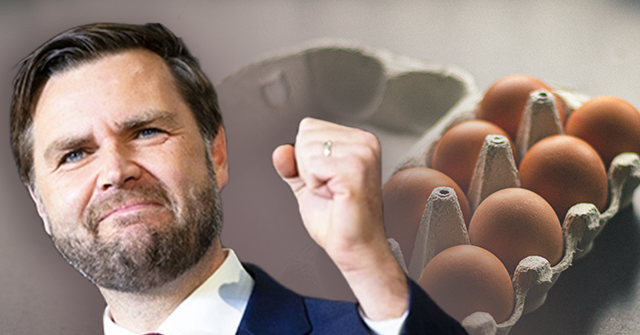Republican Senator JD Vance from Ohio faced significant backlash after he expressed concern about the rising cost of eggs, asserting that prices had soared to nearly $4 per dozen since Vice President Kamala Harris took office. Vance’s comments, made during a visit to a Pennsylvania supermarket, highlighted the impact of inflationary policies, which he claimed contributed to steep grocery price increases in the state. Critics quickly challenged his claim, pointing out that the average price of eggs was only $3.20 at that time. However, this backlash inadvertently brought more media attention to the issue of rising egg prices, which had indeed more than doubled since the Trump administration.
As recent reports from the Department of Labor revealed, Vance’s estimates were not far off. Egg prices had increased significantly, with a rise of 39.6% compared to the previous year. In August, the average price reached $3.82 per dozen, aligning closely with Vance’s assertions. This trend of rising prices added to the broader narrative of inflation, which has been a growing concern among consumers and policymakers alike. Thus, while Vance’s comments may have been met with criticism, they inadvertently spotlighted a real issue affecting many Americans.
In a broader context, inflation continues to rise, with the consumer price index (CPI) increasing by 0.2% in September, doubling expectations. The core CPI also saw a noteworthy rise, leading to an annualized inflation rate of 3.8%. Analysts look at median CPI figures to better understand underlying inflation trends, with recent monthly increases indicating that inflation has not declined as hoped. Notably, inflation’s persistence coincided with the Federal Reserve’s recent rate cuts, raising questions about the effectiveness of their monetary policy and its impact on both inflation and employment.
The challenges the Fed faces are underscored by the continued increase in the M2 money supply, which has risen to its highest levels since January 2023. This suggests that inflationary pressures are still present. Critics argue that the Fed’s decision to cut interest rates may have been premature, particularly in light of recent labor market strength and inflation reports. The bond market reflects this sentiment, with the yield on the 10-year Treasury rising after the Fed’s decision, indicating a lack of confidence in the Fed’s ability to navigate rising inflation.
Rising Treasury yields signal investor skepticism regarding the Fed’s current strategy. As inflation concerns grow, there is pressure on the Fed to reconsider its approach and potentially pause rate cuts. Any decision to pause after the midterm elections could lead to perceptions that the Fed is reacting to governmental fiscal policies rather than maintaining its independence. Such a scenario risks undermining the credibility the Fed has worked to achieve, particularly in maintaining price stability.
In summary, while JD Vance’s remarks regarding egg prices may have initially sparked controversy, they highlighted ongoing economic issues related to inflation. With the latest inflation data showing persistent price increases, the Federal Reserve faces critical challenges in managing monetary policy. The intersection of these economic factors underscores the complexity of the current financial landscape, emphasizing the need for strategic decisions that balance inflation control with economic growth while maintaining the Fed’s credibility and independence.

